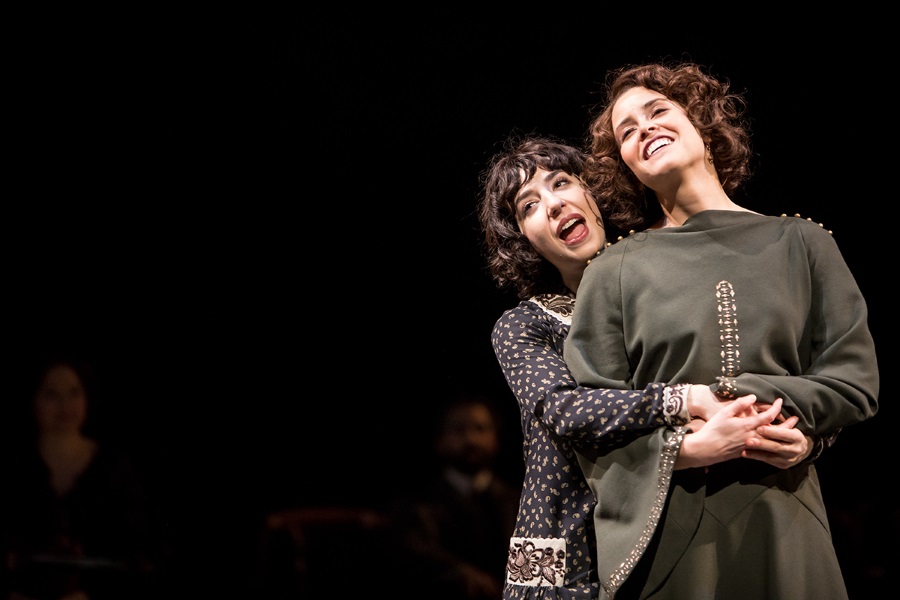When we tallied this season’s Top 10 and Top 20 Most-Produced lists, we were heartened by the percentages: 8 of the 11 most-produced plays in the coming season are written by women, while 11 of the 20 most-produced playwrights are women. These are by far the best numbers in terms of gender parity we’ve ever seen on these lists, which each year offer a telling snapshot of the U.S. theatre field’s priorities and tastes. There are also a historic number of people of color on the playwrights’ list, making this a year in which we feel like we can genuinely report good news of positive trends toward better and fairer representation of the nation’s demographics on our stages.
Still we worried. The top-line numbers may look encouraging, but what about fieldwide? After all, the one playwright we regularly exclude from that playwrights’ list, Shakespeare, will have no fewer than 96 productions in the coming season. Beyond the confines of these “hot” titles, most of them new plays, would the overall numbers show a trend toward greater gender parity or not?
Previous years prepared us to temper our expectations. The overall percentage of plays written by women jumped from a mere 21 percent in 2015 to 26 percent in 2016—then stayed stuck in 2017 at the same anemic number. Would the numbers stall or move this year?
Well, it may not quite be time to pop the champagne, but the good news is that the numbers are decisively up across the board. As the chart shows, plays authored by men constitute 57 percent of all productions, down from 62 percent last year, and plays by women comprise 30 percent, up from last year’s 26 (plays co-written by men and women take up the slack, this year comprising 13 percent).
Also trending upward is the number of new plays vs. revivals and classics: 66 percent of productions at U.S. theatres are new plays (not necessarily premieres—see below for how we break these periods down), up from 63 percent last year. As I’ve said before, it remains a hugely underappreciated fact that the American theatre, far from being a dusty museum of canonical relics held in undue reverence, is closer to a bustling new-works factory. (Though we take Shakespeare out of our Top 20 Playwrights list, his plays are factored into this overall count; U.S. theatres’ new-play bias still emerges clearly).
These two positive trends are clearly correlated, as for historical reasons women are disproportionately underrepresented among older plays (though there’s room for improvement on that front), so more new plays tends to mean more plays by women. Indeed the percentage of new female-authored plays getting productions has leapt breathtakingly in recent years: from 29 percent in 2015 to 32 percent in 2016 , then 36 last year, and now this year’s 40 percent. I don’t know about you, but that not only strikes me as unambiguously good news—the trend line over the years seems to bespeak an irreversible momentum (I knock wood as I write this, of course).
If it’s not quite a cork-popping moment yet, I think it’s worth raising a glass to the brave, talented, often undersung women who’ve paved the way forward to this moment against great odds, and to all those who’ve employed, encouraged, championed, and produced them. Change is possible. We are seeing it happen right before our eyes.
THE COUNT EXPLAINED: To compile these charts, this year we employed a crack volunteer crew, including Travis Bedard, Annika Bennett, Brad DeFabo Akin, Kayla Kaufman, Madalyn Owen, Jerald Raymond Pierce, and Mariah Schultz. We pored over the same data set as we did for our Top 10 Plays and Top 20 Playwrights lists, though our totals varied: 2,085 productions from 387 TCG member theatres scheduled between the dates of Sept. 1, 2018, and Aug. 31, 2019. We defined “production” as anything with at least a week’s run, and we excluded improv shows, readings, cabarets, and festivals.
We counted each production in two categories: gender (male, female, and genderqueer, though this year there were not enough in the latter category to constitute a meaningful percentage) and era (new play, revival, classic). We considered plays that premiered between 2008 and now to be “new,” and a “revival” as a show whose first production took place between 1968 and 2007. Anything predating 1968 we’ve considered a canonical work, or a “classic.”
We also distinguished gender from era: Any work with more than one credited author, including an adaptor or translator, of different genders was considered “co-written” in our gender tally. This would apply equally to In the Heights (Lin-Manuel Miranda, Quiara Alegría Hudes) and to Annie Baker’s adaptation of Chekhov’s Uncle Vanya.
But for the era breakdown, we did not consider a work like Baker’s Vanya to be a contemporary/classic hybrid. Instead, for the purposes of counting the play’s period, we would call it a classic, straight up—not least because Chekhov’s title is unchanged and his name comes first, signaling that while this may be Baker’s “take” on the original it can’t really be counted as a brand-new play. Michael Hammond’s Uncle Jack, on the other hand, would count as a new play; though inspired by Uncle Vanya, the title tells us it’s Hammond’s, and it’s new. (Same with Branden Jacobs-Jenkins’s An Octoroon, and so on.)
We took a similar approach with plays adapted from non-dramatic sources, like films or books (from stage versions of Pride and Prejudice, say, to the innumerable adaptations of A Christmas Carol), and with adaptations of any source into a musical: We considered the debut of the stage version to be the material’s origin date as a work of theatre. And, to bring things full circle, in all these cases we considered the genders of adaptors or co-writers, if they were mixed, to make these productions “co-written.”



